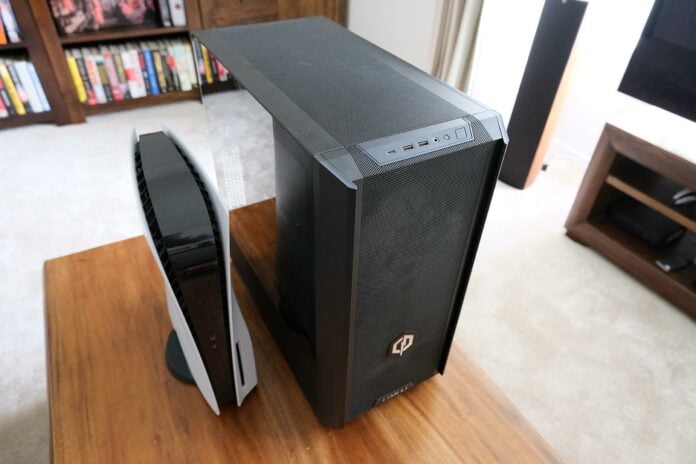Aspirational hardware such as the Intel Core i9-13900KS chip and GeForce RTX 4090 graphics card are all well and good at stimulating enthusiast salivation, but their intrinsically high price naturally puts them out of the reach of many. It’s in the mainstream segment that value and performance meet more agreeably, so armed with that remit, we challenged respected UK system builder Cyberpower to come up with a great gaming machine for £1,500 – or less than the cost of the aforementioned chief RTX protagonist. The labours of the Gateshead-based outfit arrive with the Infinity X135 D5 system sensibly armed with Core i5-13400F and RTX 4070. Let’s dig in.
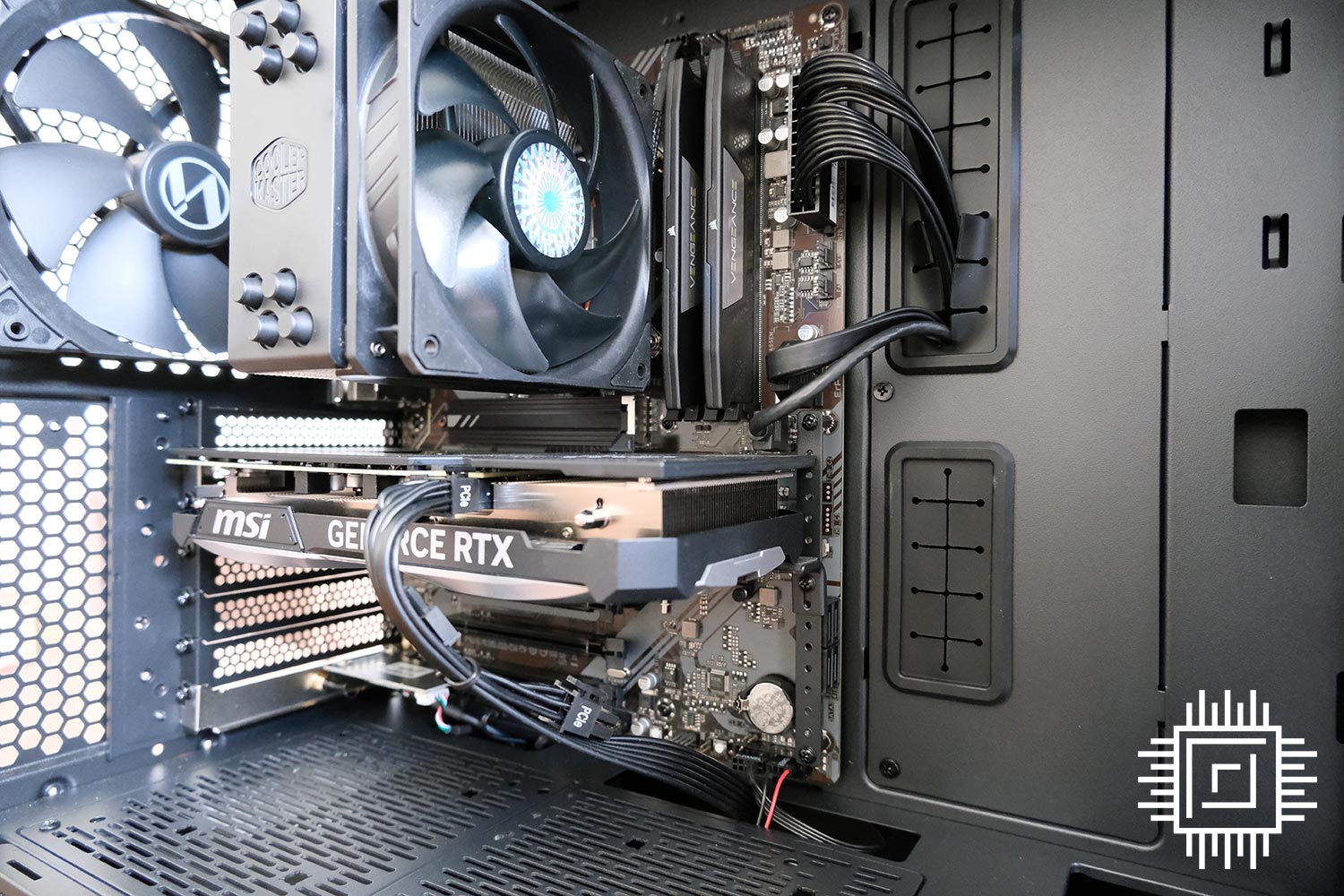

Cyberpower Infinity X135 D5
£1,500
Pros
- Great value
- Well-balanced spec
- Oh so quiet
- Frugal on power
- Cool and composed
Cons
- Lack of RGB
Club386 may earn an affiliate commission when you purchase products through links on our site.
How we test and review products.
Cyberpower doesn’t attempt to reinvent the wheel with the X135, and that’s a good thing. Showing the versatility of the chassis, Lian Li’s Lancool 216, previously seen on the £3,900 R79 X3D Ultra, remains a solid starting point. The top I/O panel comprises dual Type-A and a single Type-C USB and can, helpfully, be moved and situated on the bottom-left of the case – you can see the feint cutout section – should the system be placed on a desk.
Removing the three-quarter-height smoked side panel is easy as it’s latched with only one captive screw to disengage, though do understand it’s so reflective that it can sometimes be difficult to see the kit contained within.
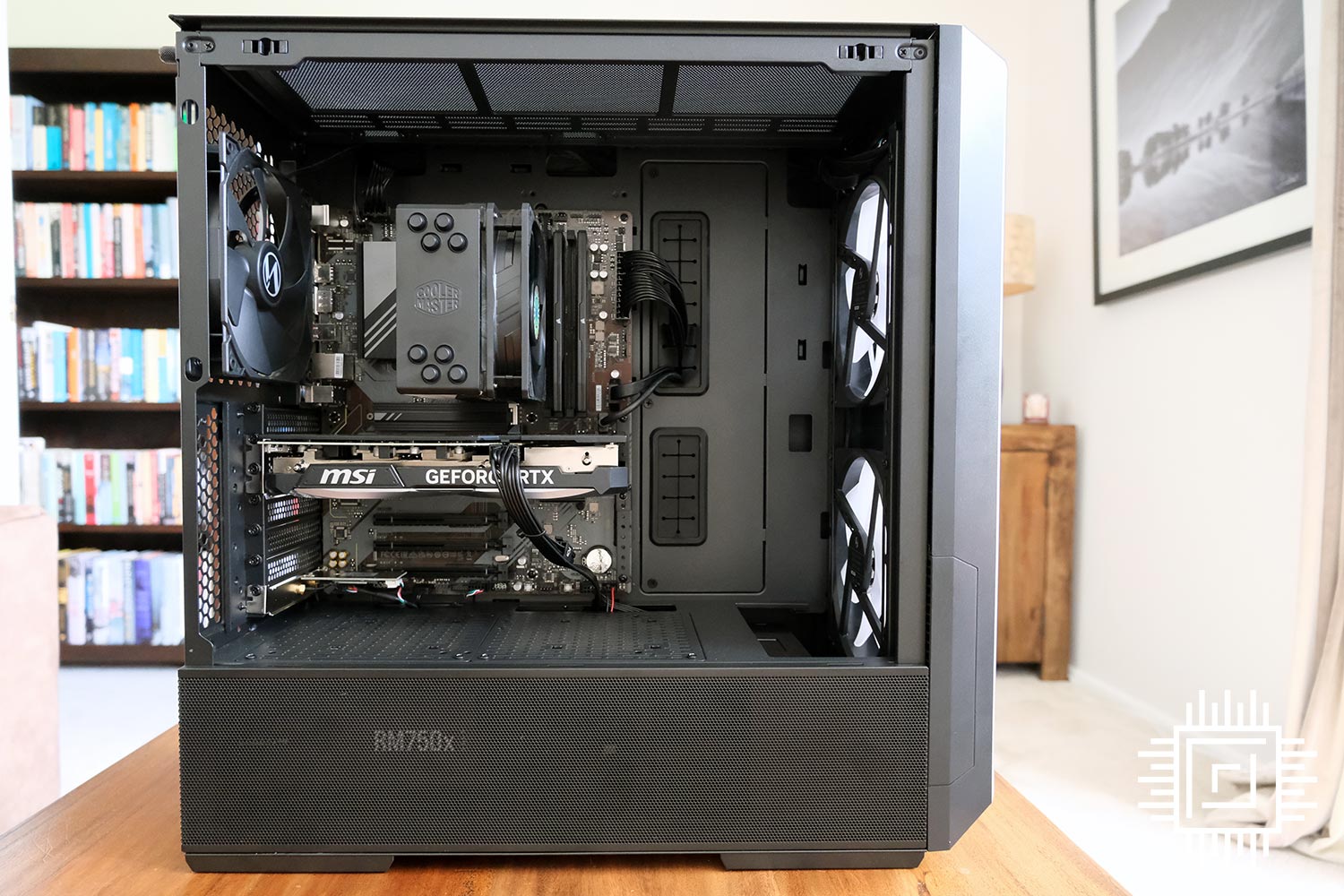
Specification
There’s little reason to choose watercooling when dealing with conservative-wattage components, and we’re fans of the Cooler Master Hyper 212 heatsink and MSI RTX 4070 Ventus 2X graphics. If tuned correctly, neither CPU nor GPU ought to require excessive cooling.
Alder Lake-based Core i5-13400F is sat on top of a Gigabyte B760 DS3H motherboard. The chipset choice makes a lot of sense as it’s considerably cheaper than Z790. Opting for the DDR5 version and equipping it with 32GB (2x16GB) of 5,600MT/s-rated memory incurs roughly a combined £40 premium over going down the DDR4 route. Though there is no next-generation upgradeability potential for 13th Gen Core and B760, we still feel going for DDR5 is worth it for that extra performance punch.
The system is bereft of RGB lighting other than the light emitted by the twin 160mm intake fans on the front. Their glow doesn’t extend to the components during daylight but does create a subtle glow when night draws in. Those wanting more can take advantage of the two RGB and addressable LED strips situated on the motherboard.
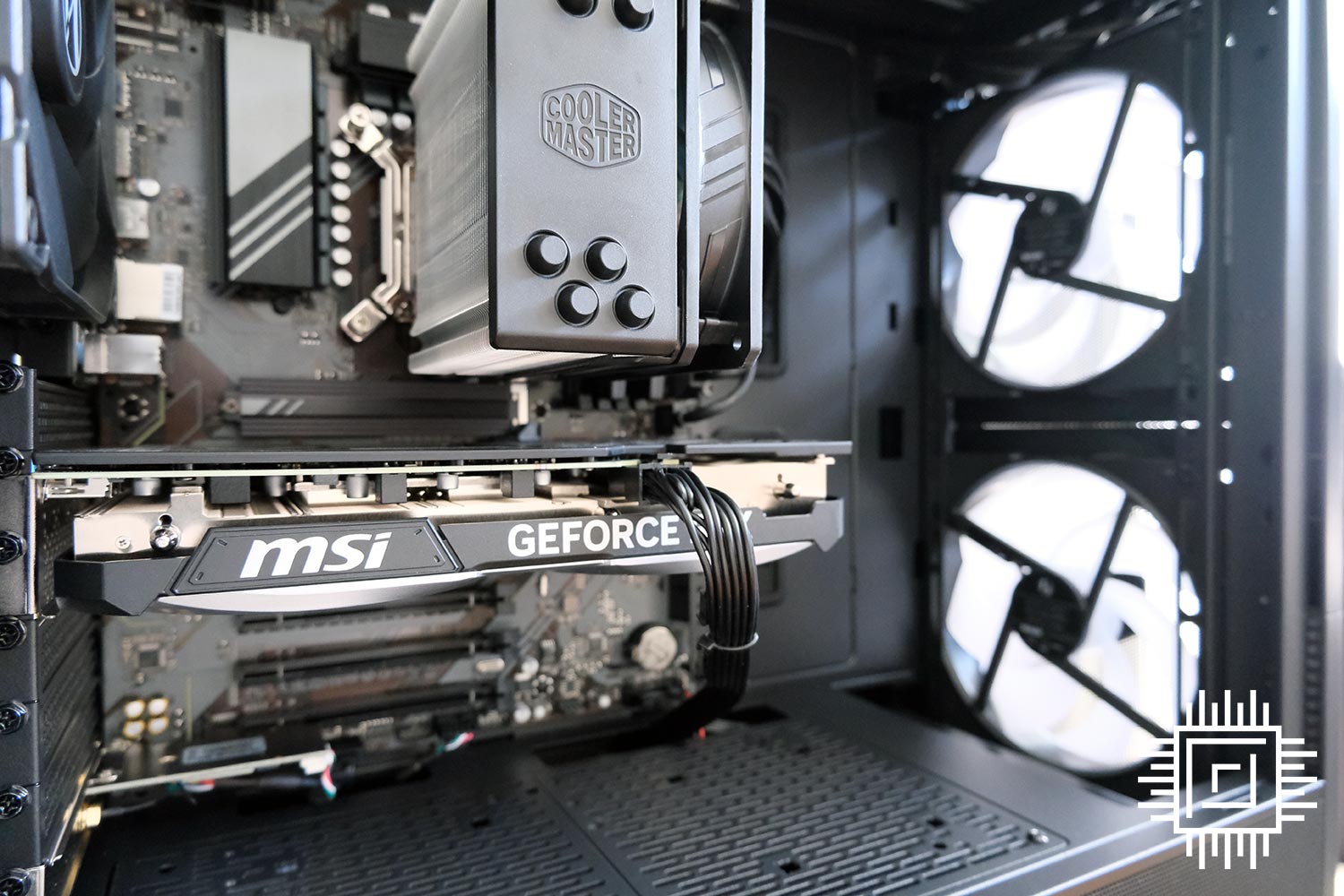

There’s no easy way to hide the PCIe cable coming from the 750W Corsair Shift PSU – Cyberpower must have bought a job lot as it’s common across many systems – yet we’d have routed it via the same hole as for the 24-pin ATX and other connectors.
Kudos to Cyberpower for not skimping on the SSD hidden underneath a motherboard heatsink. The PCIe 4.0 x4 1TB Solidigm P44 Pro is a great choice for a system of this ilk, and we’re expecting 7GB/s peak transfers.
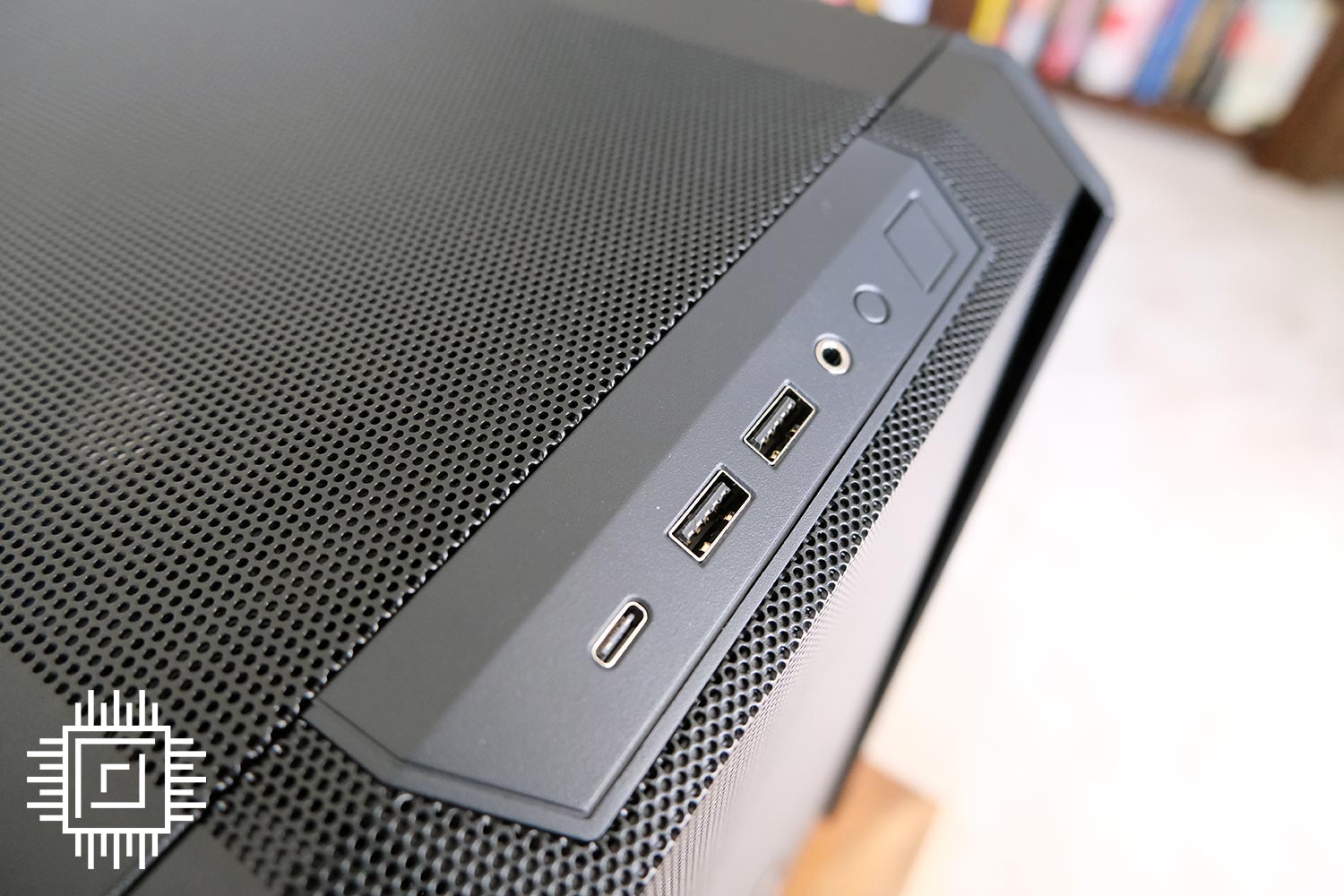
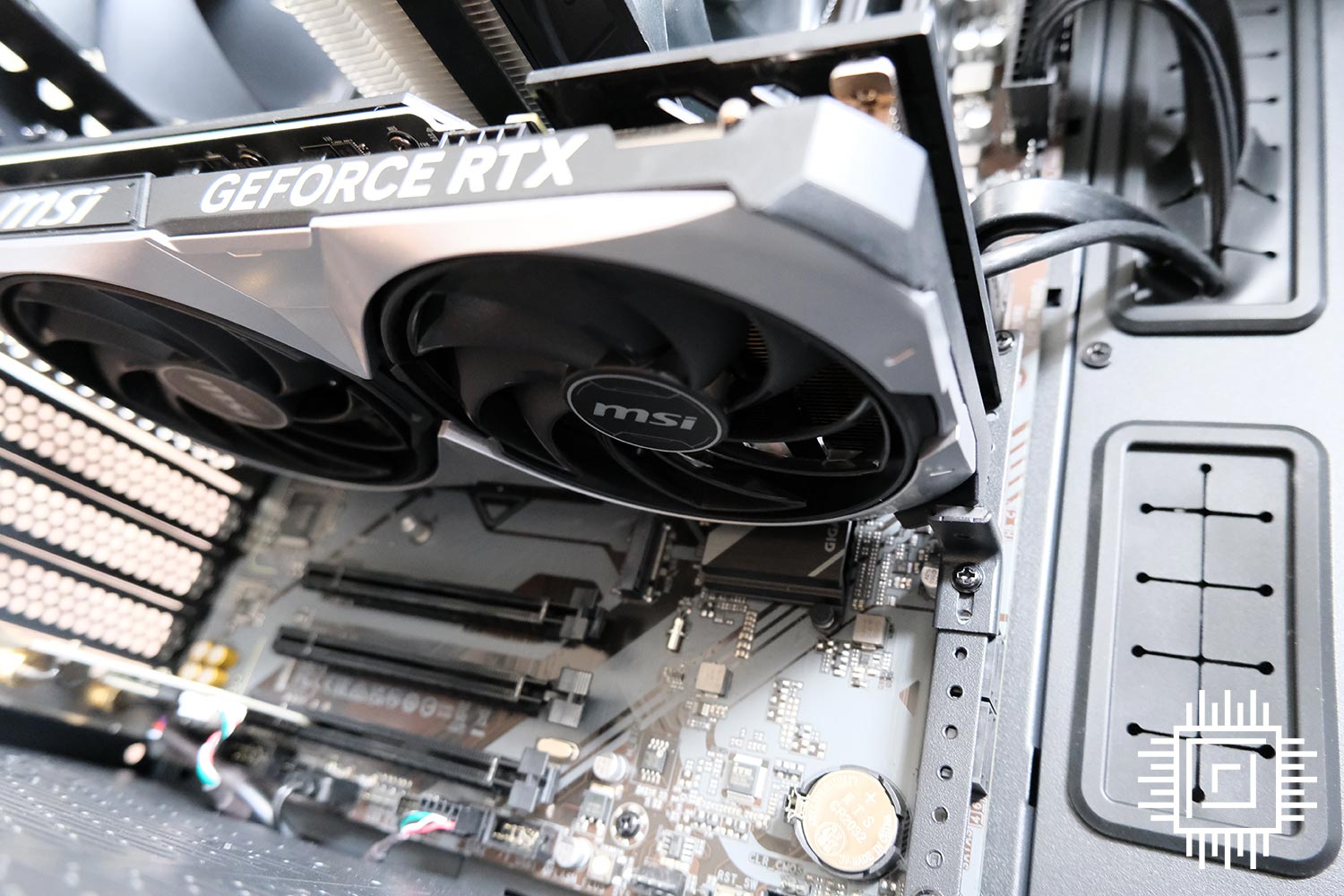
Gigabyte doesn’t specify Wi-Fi on the motherboard. Cyberpower rights this wrong by installing an AX200 card at the bottom. Other than that, the motherboard is well-stocked as it carries both HDMI and DisplayPort on the I/O section along with Type-C USB running at a fast 20Gbps.
Cyberpower backs the system with what’s termed a Gold five-year warranty that includes two years collect and return, two years parts, and labour for the length of cover. That’s good going for a £1,500 rig.
The seminal question is always one of whether it’s worth going down the build-it-yourself route for satisfaction and money saved. Popping in the various components and operating system leads to a £1,493 price tag, meaning you’re paying practically nothing for the build and warranty. In that sense, Infinity X135 D5 offers excellent value.
Performance
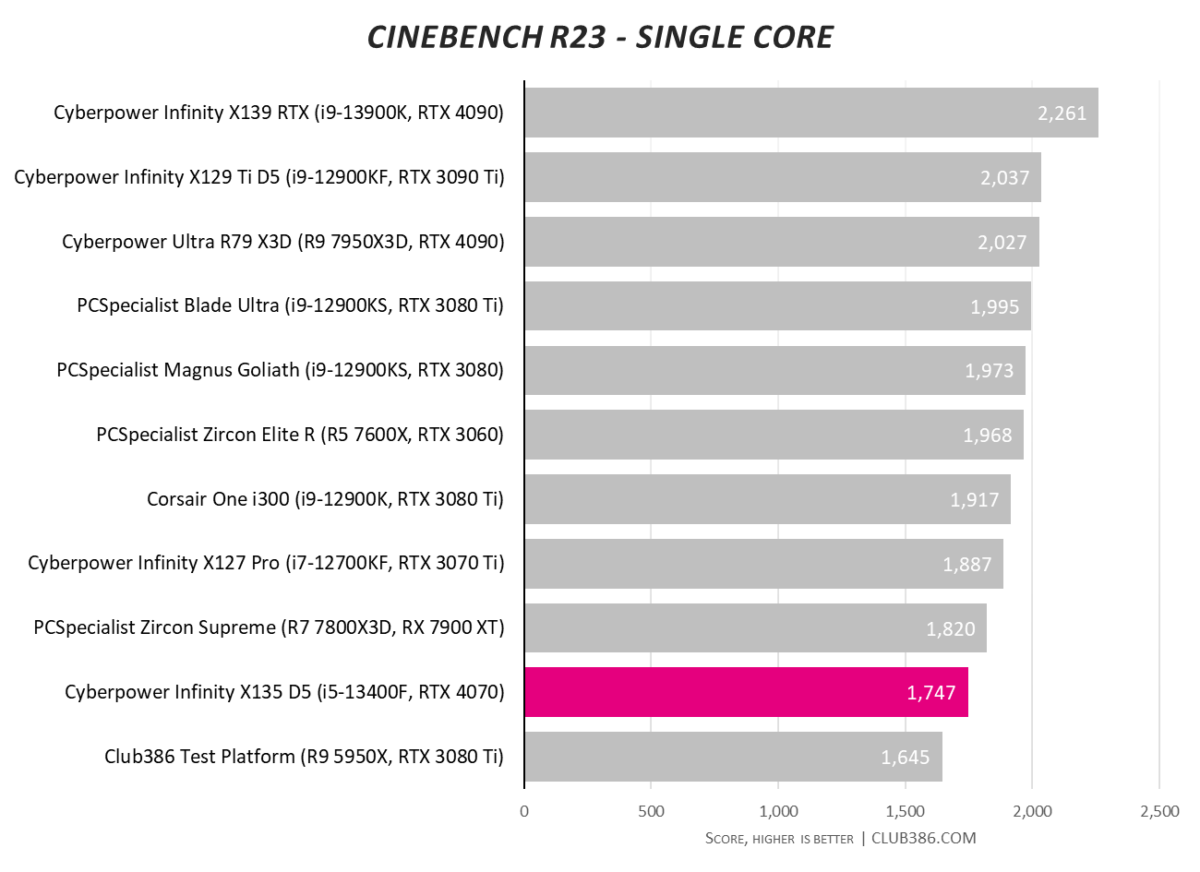
Bear in mind we’re comparing to a bevy of more expensive systems that have passed through the labs recently. Closest in price is the PCSpecialist Zircon Elite R, reviewed at matching £1,499, albeit five months ago.
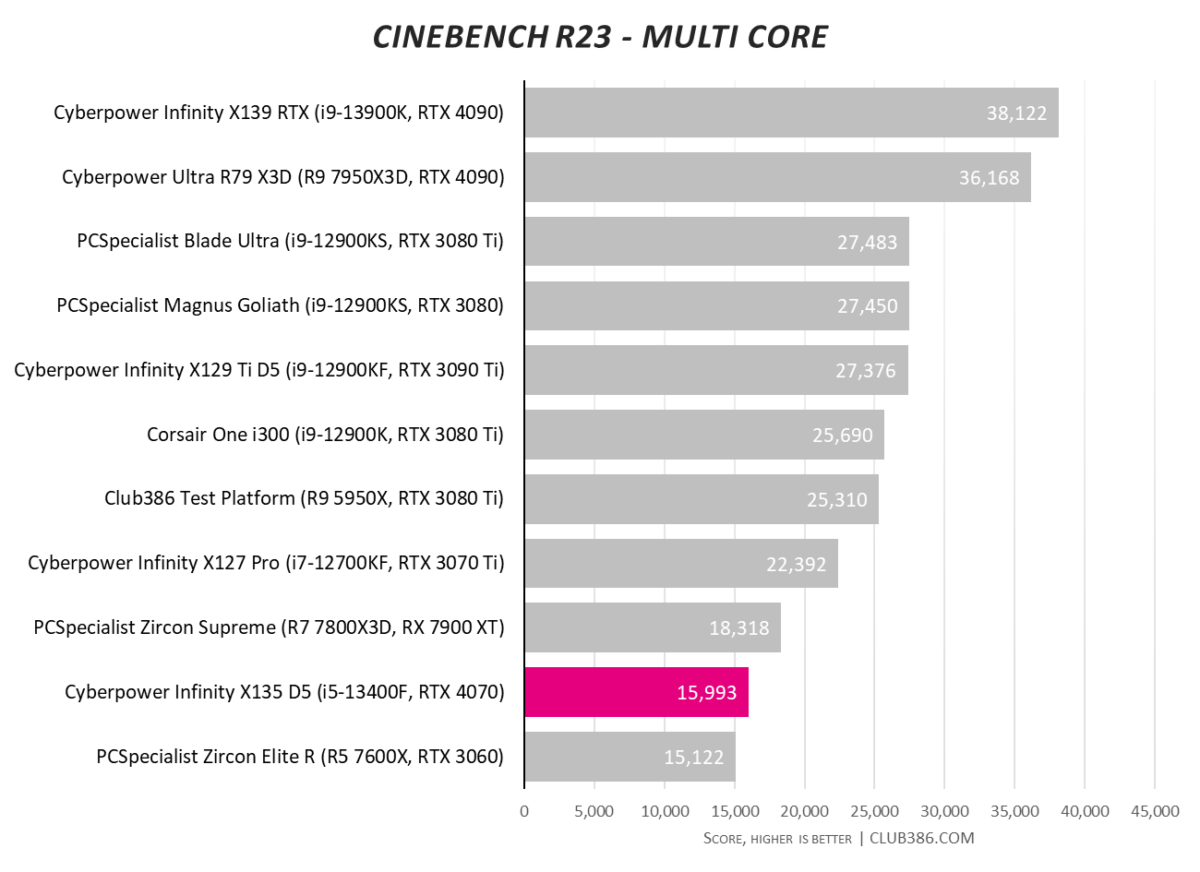
Core i5-13400F offers reasonable multi-thread oomph, especially when viewed at the asking fee. Any score above 15,000 generally bodes well for productivity. Go back a few years and we find Intel’s then-champ Core i9-10900K returning similar nT results yet a fair bit slower on 1T. Progress, eh.
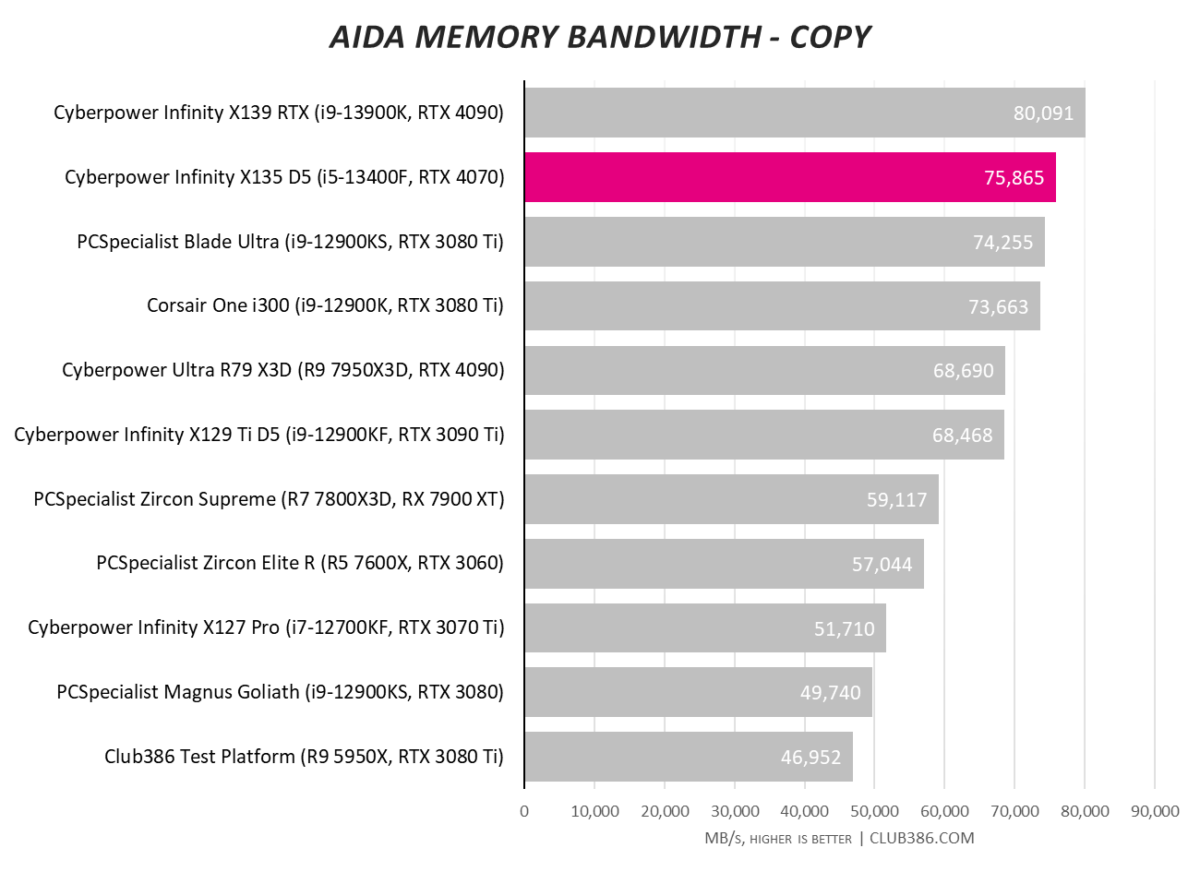
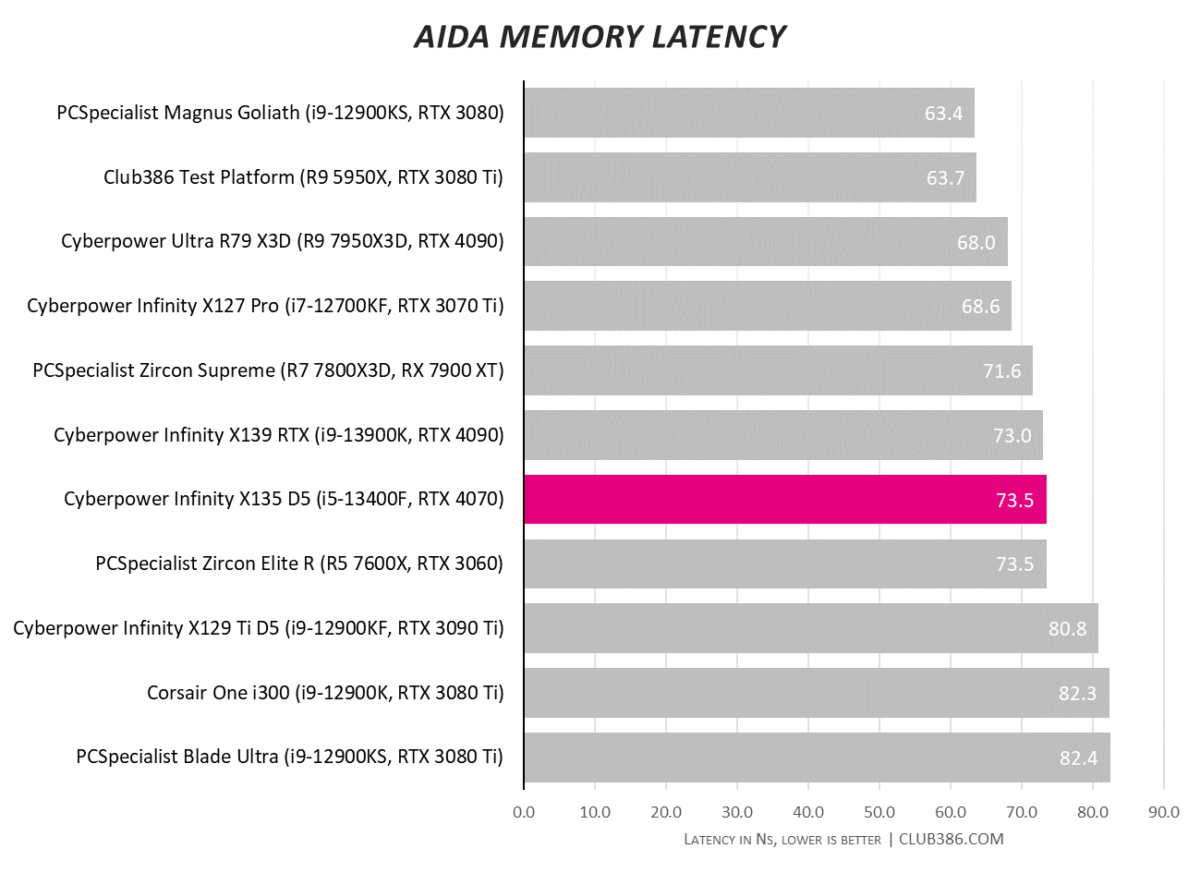
Dual-channel DDR5-5600 is a nice fit for this system, pushing out decent bandwidth at acceptable latencies.
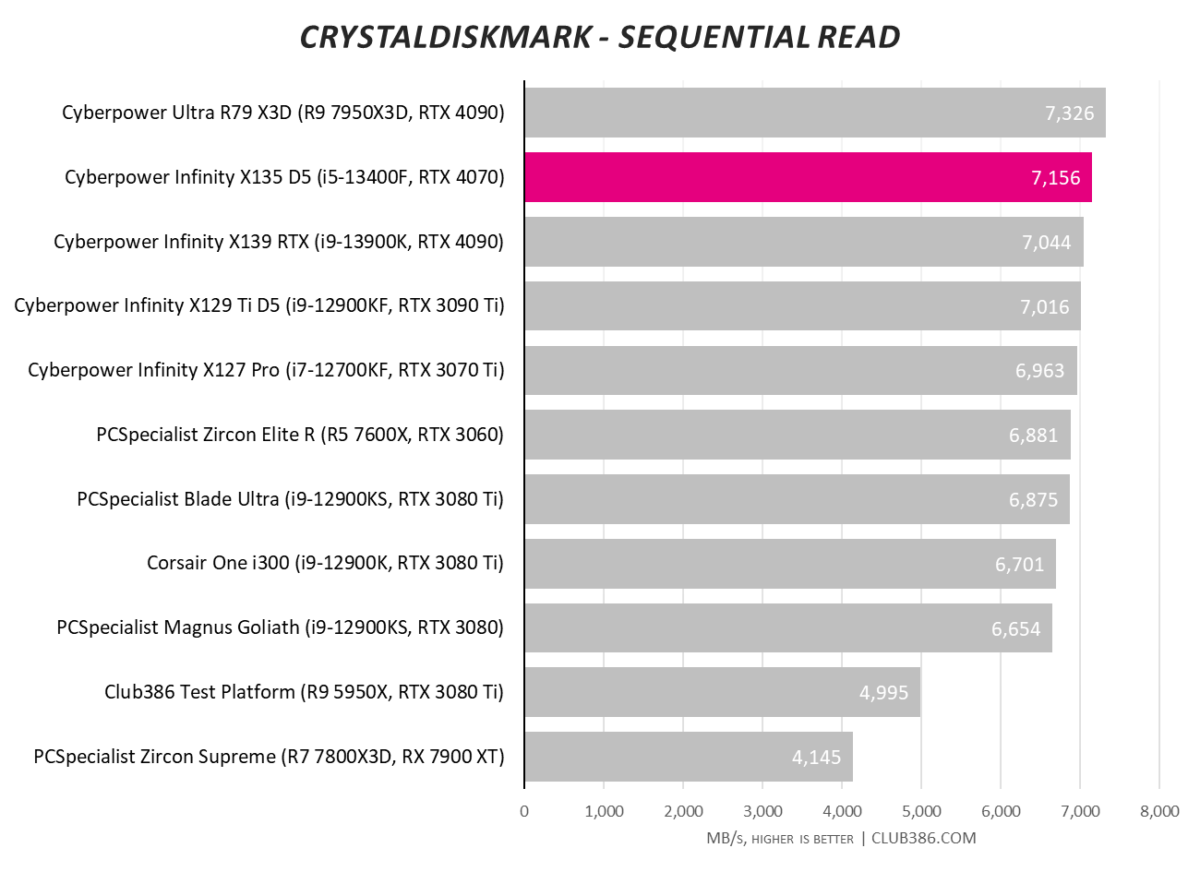
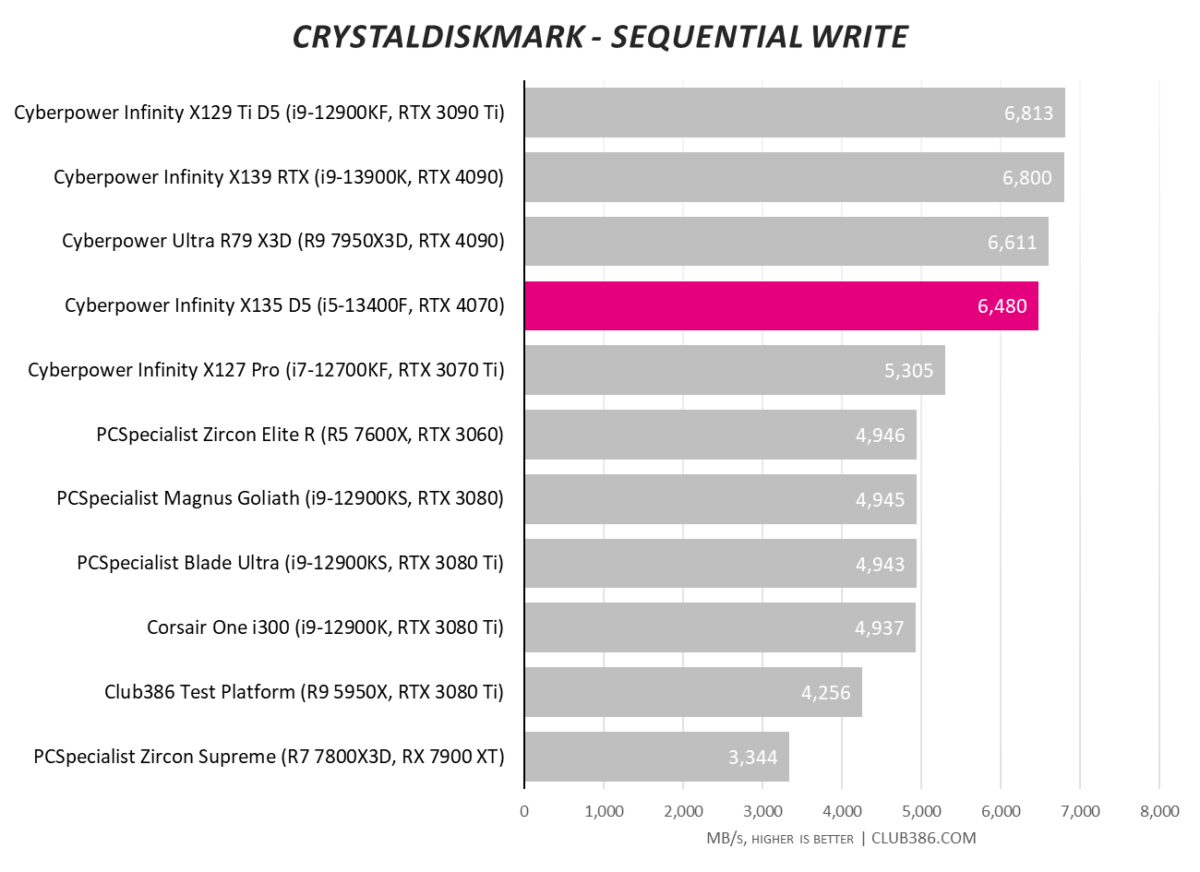
The sharp decline in SSD pricing enables system integrators to pack more powerful models at various price points. Nothing wrong with how the Solidigm P44 Pro performs.
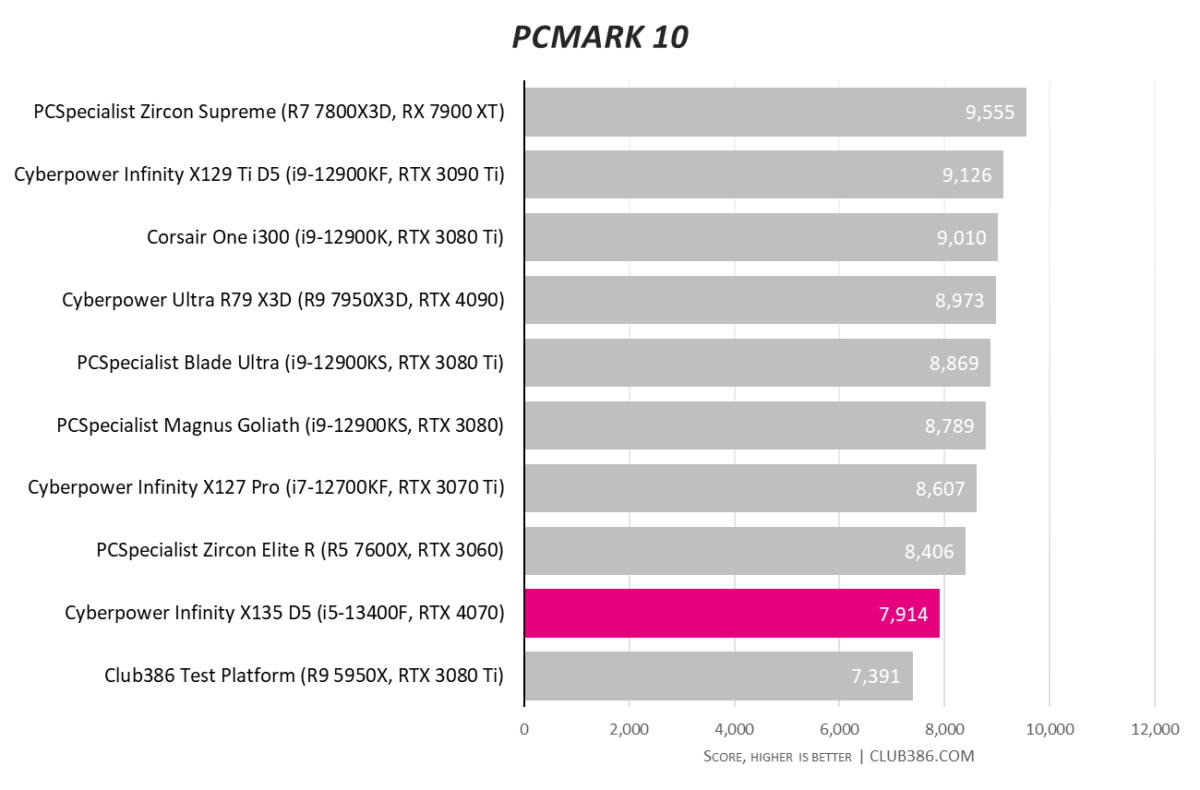
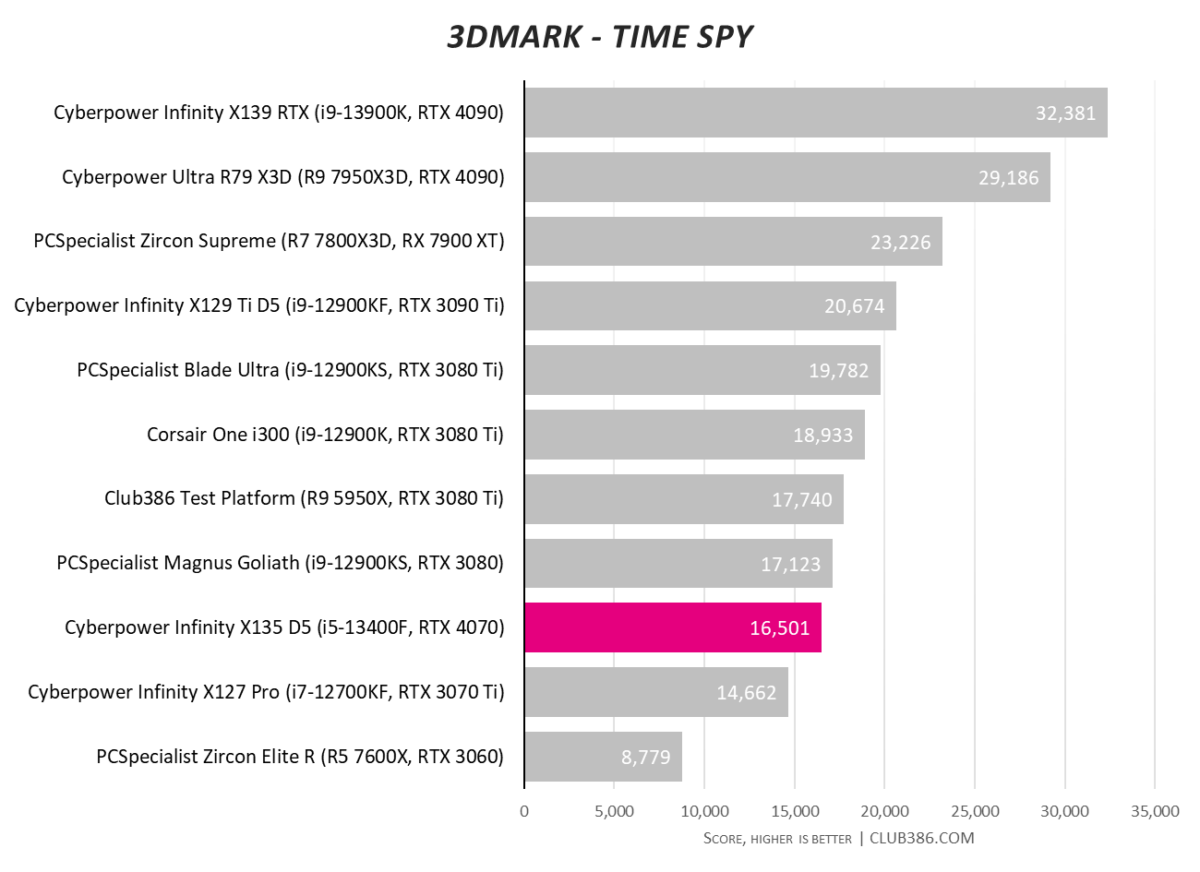
When you get around 16k in both Cinebench and 3DMark there’s every reason to feel optimistic about overall performance.
Gaming
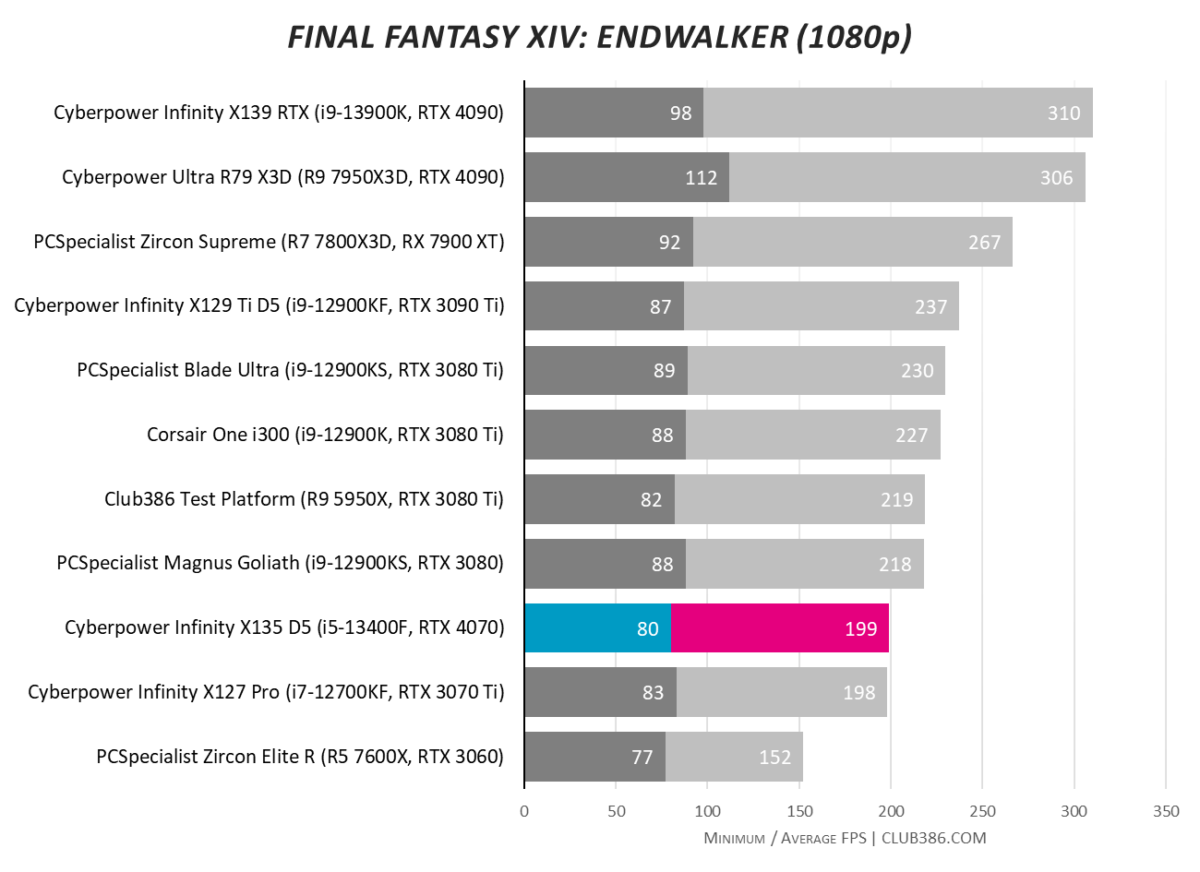
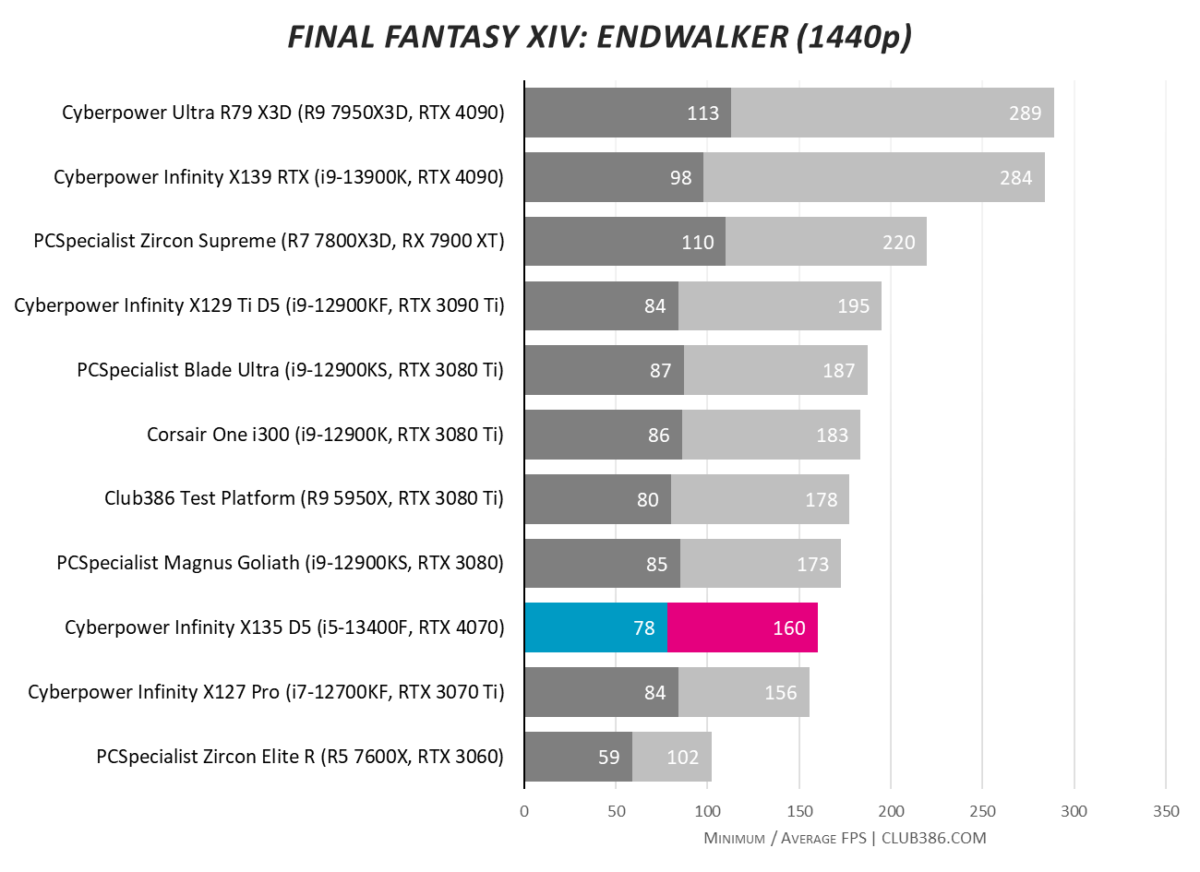
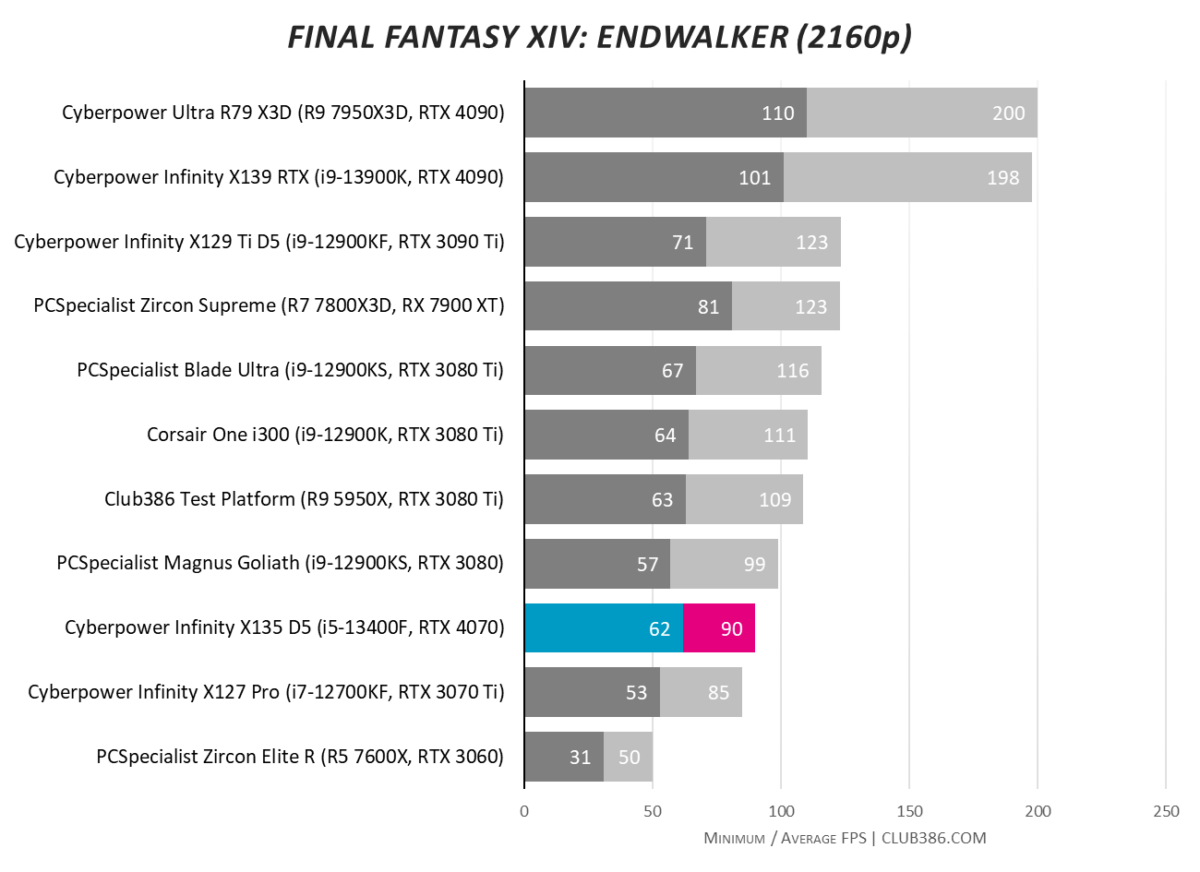
Our standard gaming test reveals the MSI RTX 4070 Ventus 2X provides excellent performance at FHD and QHD. What’s more, it’s competent at UHD, too.
| Game | FPS @ 1080p | FPS @ 1440p | FPS @ 2160p |
|---|---|---|---|
| Assassin’s Creed Valhalla (Ultra High Quality) | 149 | 111 | 64 |
| Cyberpunk 2077 (Ray Tracing Ultra, DLSS Quality, FG Off) | 98 | 65 | 33 |
| Cyberpunk 2077 (Ray Tracing Ultra, DLSS Quality, FG On) | 151 | 98 | 49 |
| Far Cry 6 (Ultra Quality, HD Textures and DXR On) | 113 | 105 | 63 |
| Tom Clancy’s Rainbow Six Extraction (Ultra Quality) | 268 | 177 | 91 |
Testing a variety of modern games reveals genuine 4K60 potential. Even the GPU hog that is Cyberpunk 2077 can be brought up to decent framerates using Nvidia’s novel DLSS frame-generation technology. In short, the Cyberpower Infinity X135 D5 is an excellent gaming machine for the money.
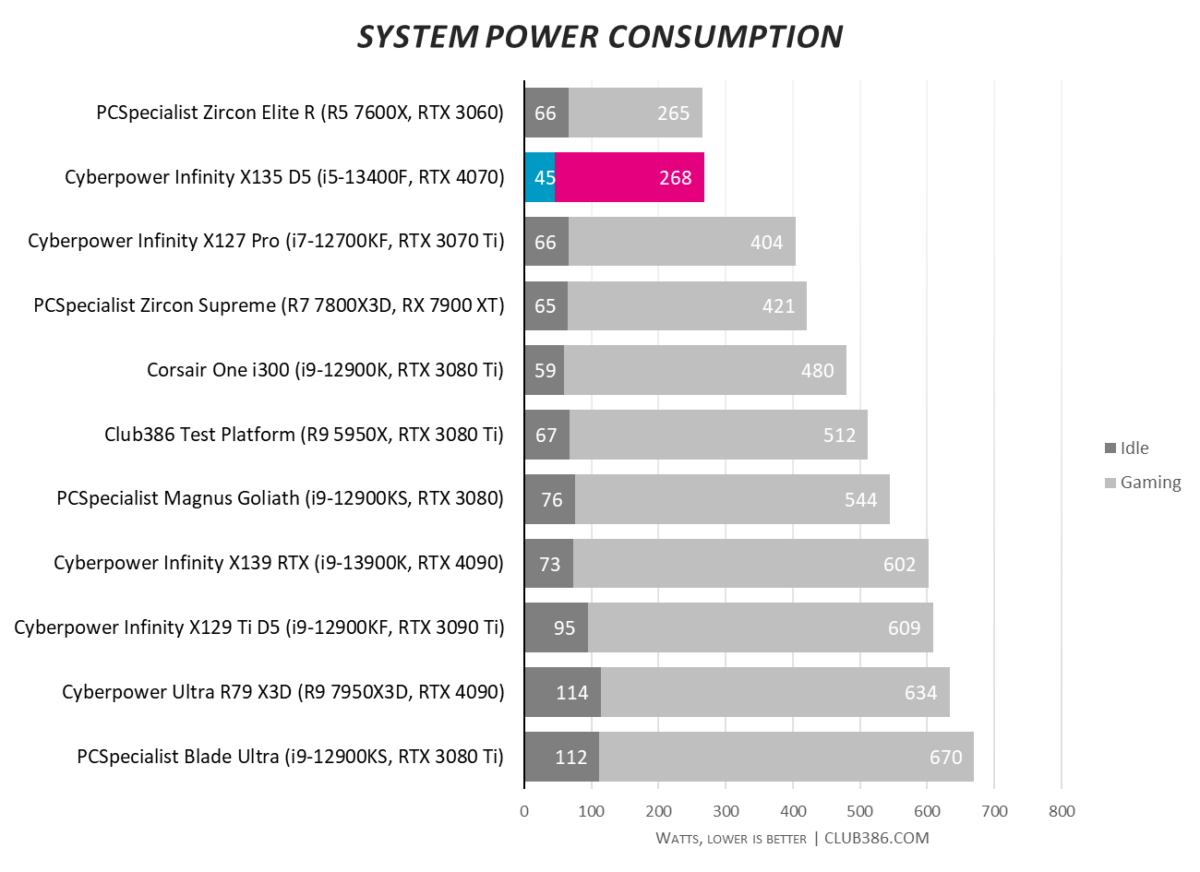
Performance doesn’t always need to translate into thirsty. The peak observed gaming system power draw is comfortably less than 40 per cent of the 750W PSU’s capacity, meaning there’s ample room to upgrade to a faster GPU or CPU in the future.
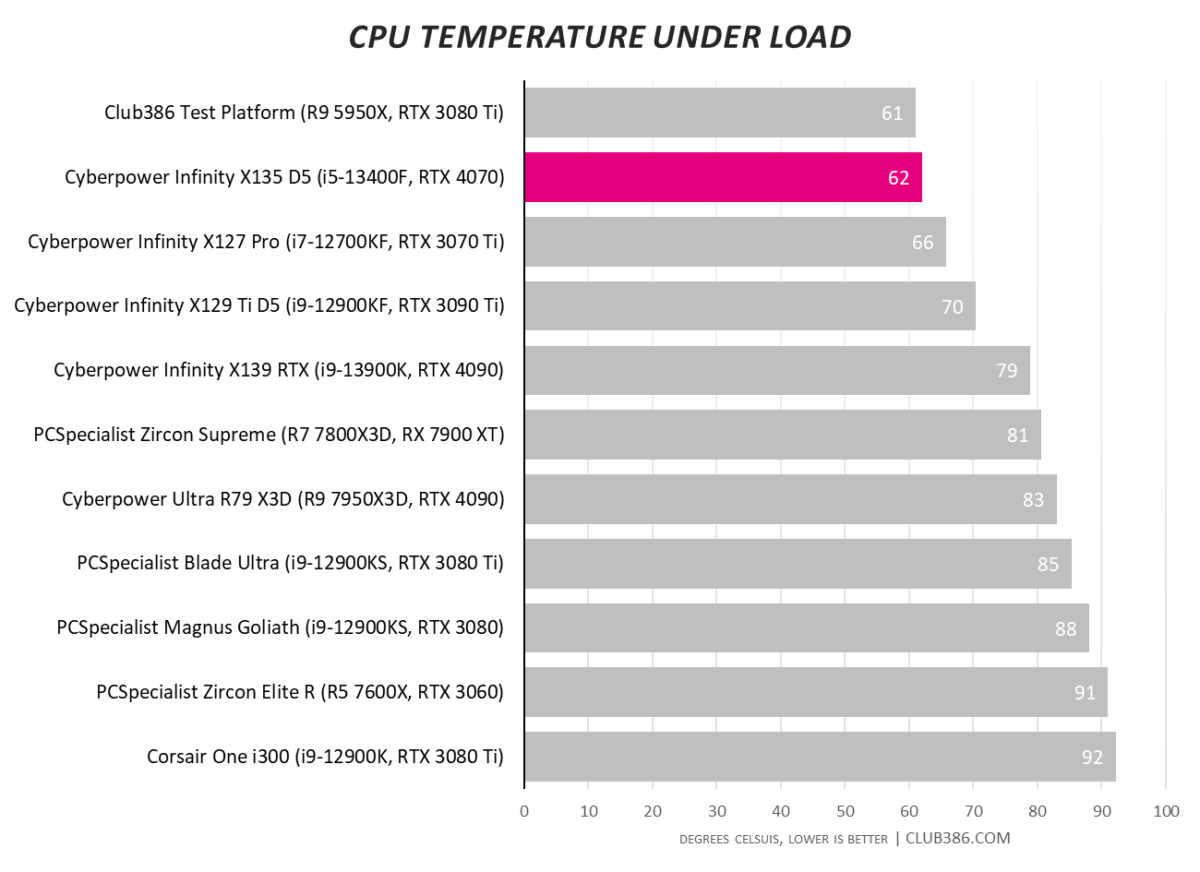
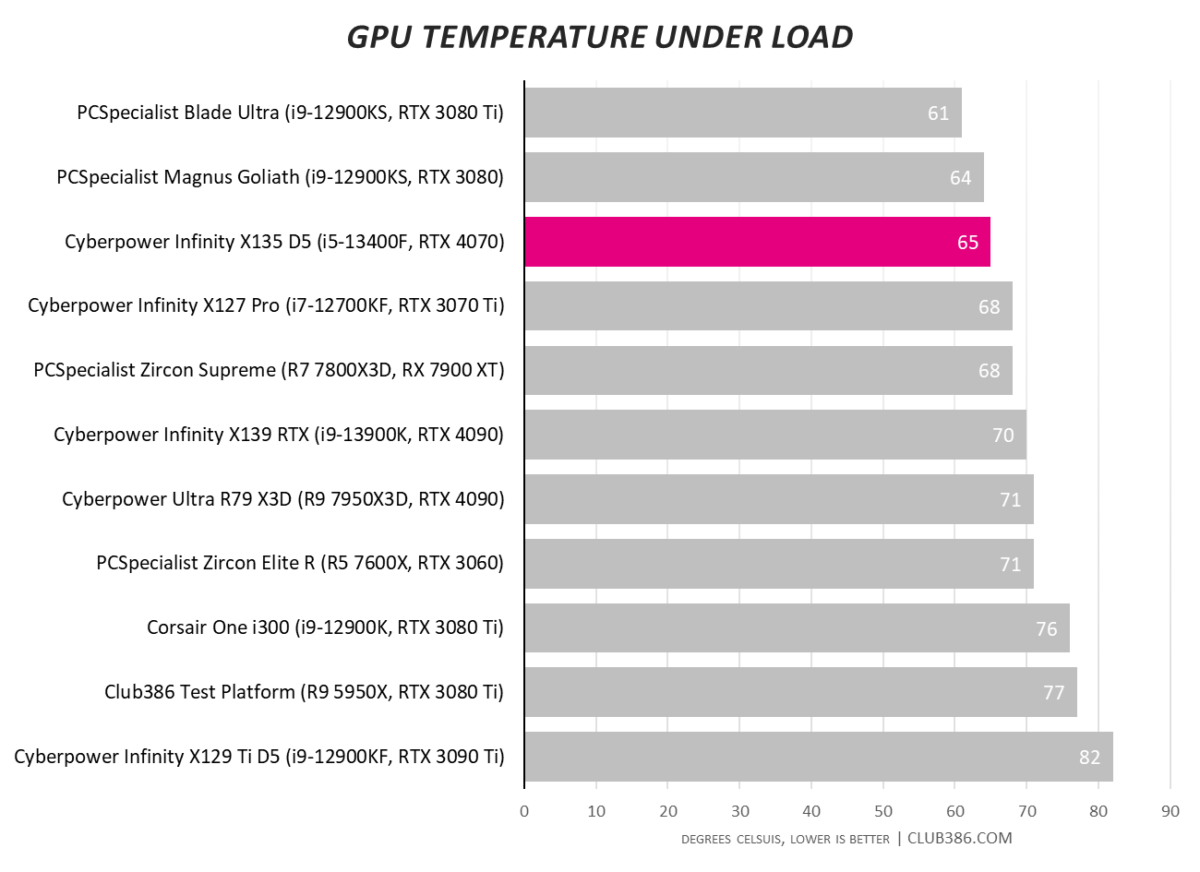
A positive aspect of meagre power consumption is excellent temperatures for both major components.
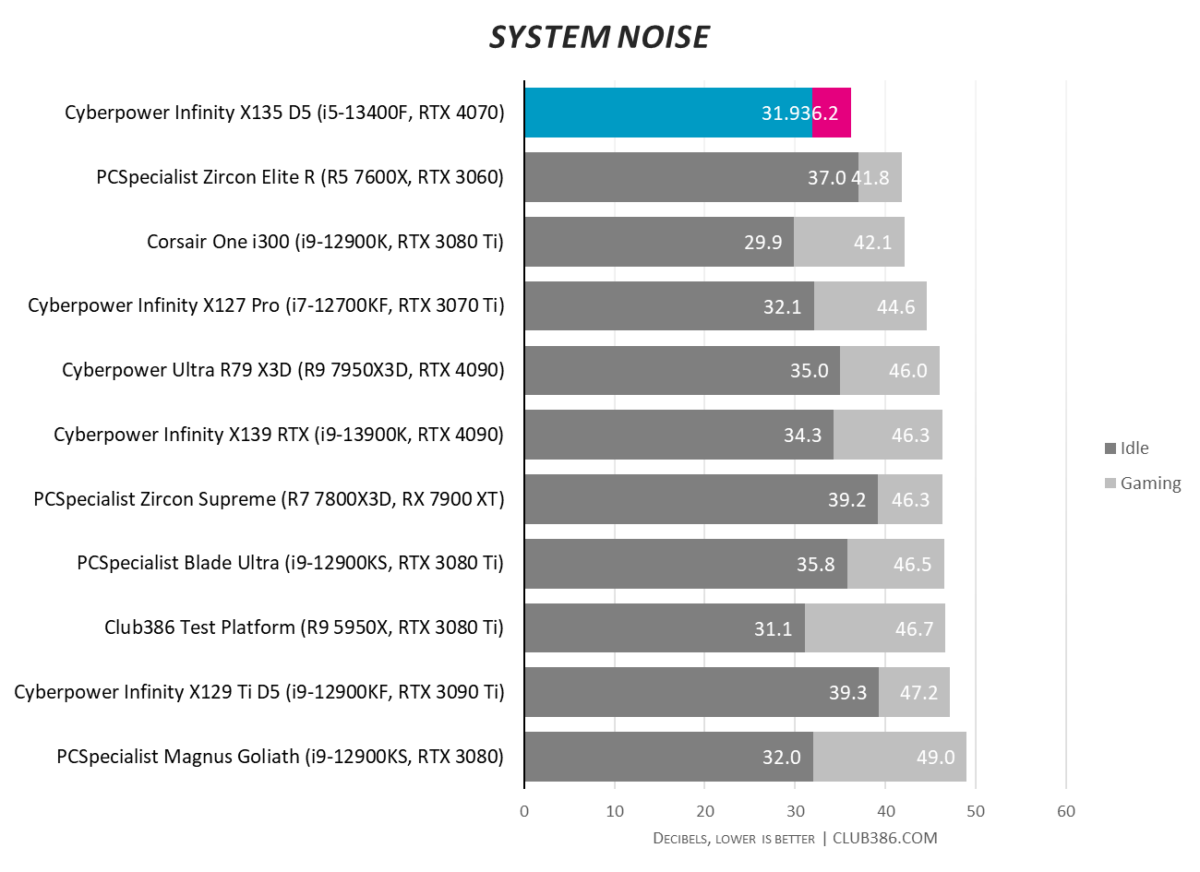
And completing the trinity is a lack of noise. Too many times we’ve heard PCs kick into a higher vocal gear as soon as a game is loaded. Infinity X135 D5 doesn’t do that at all. Rather, it keeps to a steady hum that is not in the least offputting. This is how all PCs ought to be built.
Conclusion
Building a PC majoring on value and performance requires careful thought. Opting for a mid-range Core i5 and tying it to an RTX 4070 remains prudent if the aim is to provide high-quality gaming at FHD and QHD resolutions. Cyberpower does exactly this with the Infinity X135 D5 PC.
Component choices are one thing, integration is another, and it’s here that Cyberpower wins out. The machine is cool, eerily quiet and composed at all times, just as it should be.
Costing less than the outlay ascribed to a GeForce RTX 4090, Cyberpower builds a system that we can recommend to a wide range of gamers.
Verdict: A well-thought-out gaming PC that majors on value and integration.

